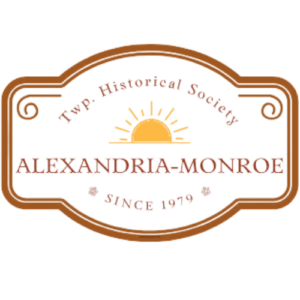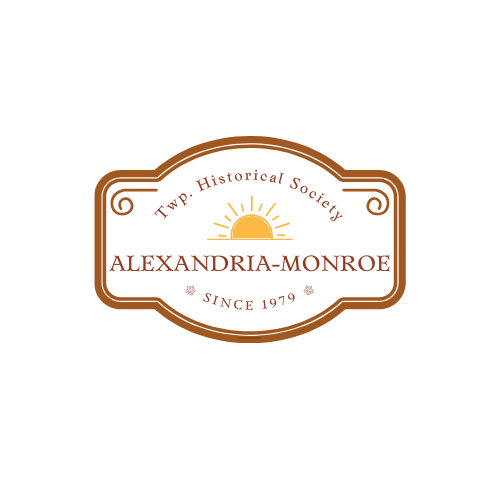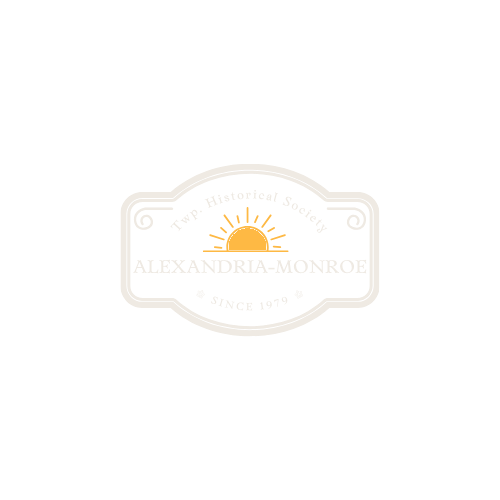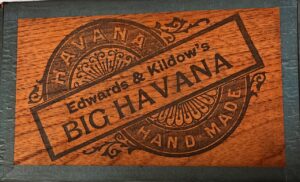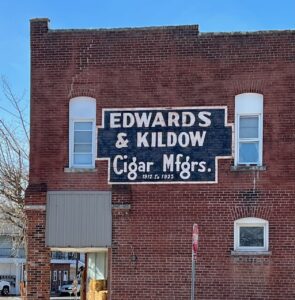 The museum loves to receive ephemera that tells the history of local businesses. We especially appreciate items that help to tell the story of our culture, too. To continue our articles on unique jobs, how many of you knew about the various cigar-related businesses around Alexandria?
The museum loves to receive ephemera that tells the history of local businesses. We especially appreciate items that help to tell the story of our culture, too. To continue our articles on unique jobs, how many of you knew about the various cigar-related businesses around Alexandria?
Early History
In the first decade of the 1900s, cigar stores such as the City Cigar Store and Ross & Hupp Cigar Store became popular places (for men only) to gather for cigar smoking, card games, and other small-time gambling. Before radio and television, news and sporting events were reported and read from wire telegraph notices. The famous James Jeffries-Jack Johnson boxing match of 1910 results were read from wire reports received in the City Cigar Store. (Jack Johnson was the first African-American heavyweight champion.) These cigar locales were beginning to transition from a saloon setting to more of a local sports bar atmosphere.
From 1912 to 1925, local business owners George Edwards and Glen Kildow made Jim Squire stogies and Big Havana cigars at 212 West Washington Street. A stogie was a long, thin, inexpensive, and rough-surfaced cigar. It was molded, wrapped smoothly with a tobacco leaf, and surrounded by a glued wrapper.
A 1915 Alexandria Times-Tribune article noted that Edwards & Kildow Cigar Manufacturers had twenty-three employees or “girls” who made an average of around ten thousand cigars daily. The article noted that Alexandria businesses sold the cigars, but “jobbers” sold them to businesses throughout Ohio, Indiana, and Michigan. Later in 1915, they expanded to six more northwest states. The “Big Havana” cigar became popular in the 1920s and sold for 5 cents each.
Former school principal turned columnist Charles Schroth wrote an article in the November 7, 1990, Alexandria Times-Tribune about Edwards & Kildow. He shared how former resident Rosie Miller Cox made cigars starting in 1917. She told Schroth that “each girl was required to wrap 1,000 cigars a day.”
The mural on the northwest building at the intersection of Canal and West Washington denotes that location as the former Edwards & Kildow Cigar Manufacturing facility. Some might recall that location as Benefiel’s grocery store or the Monroe Township Trustee’s office. Kildow’s paint store was also in that building.
Cultural Shifts
After World War II, many cigar stores closed, moved into smaller locations, or changed their focus from a men’s-only venue. For example, the Mullens Shoe store moved from Church Street to 115 North Harrison, the former location of a cigar store. The Childress or Southside Cigar Store moved into a lower room in the Knights of Pythias building at 115 South Harrison. Ralph’s Cigar Store at 117 West Washington Street also started selling ice cream.
From the 1950s to the 1990s, cigar stores in Alexandria evolved into convenience stores and even small diners. They were not quite a small family grocery store but more like a quick stop for treats, candies, sundries, beverages, and small meals. For example, 120 East Church Street was the locale formerly known as the Club Cigar Store, Brandon’s Place, and The Office.
Cigar bars have started to regain a foothold in our culture again. Places such as the Maduro on Main in Fortville and the Final Third Cigar and Whiskey Lounge in Ingalls have sprung up.
Cigar boxes containing cigars or stogies once lined store shelves in cigar stores and other retail outlets. However, many of us at the museum recall using the cardboard cigar boxes from Edwards & Kildow to store our crayons, school supplies, and tiny toy treasures.
Thanks to Butch Richardson for his donation of Edwards & Kildow cigar memorabilia. We will add these items to the museum’s business room collection along with our cigar molds on display. Stop by the museum to check them out!
What about you? What exciting or unique job did you have while living in Alexandria, Orestes, Gilman, or the area? Contact us to help us build our local collection!
